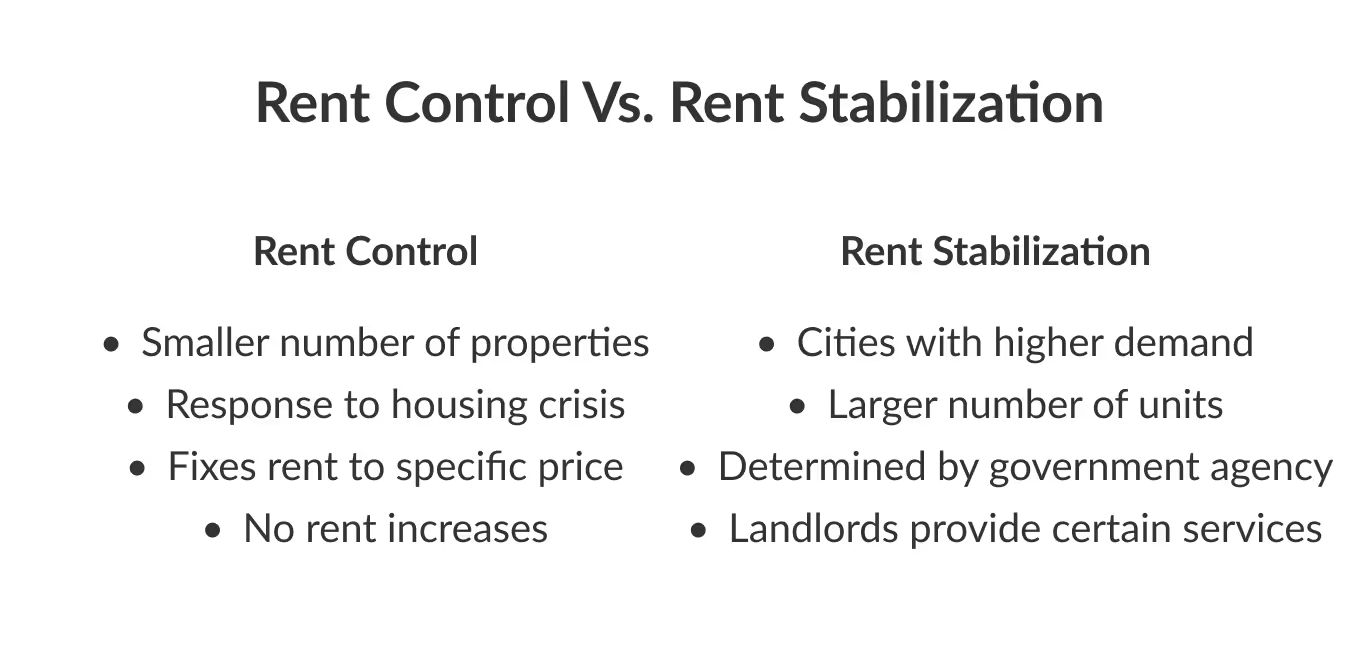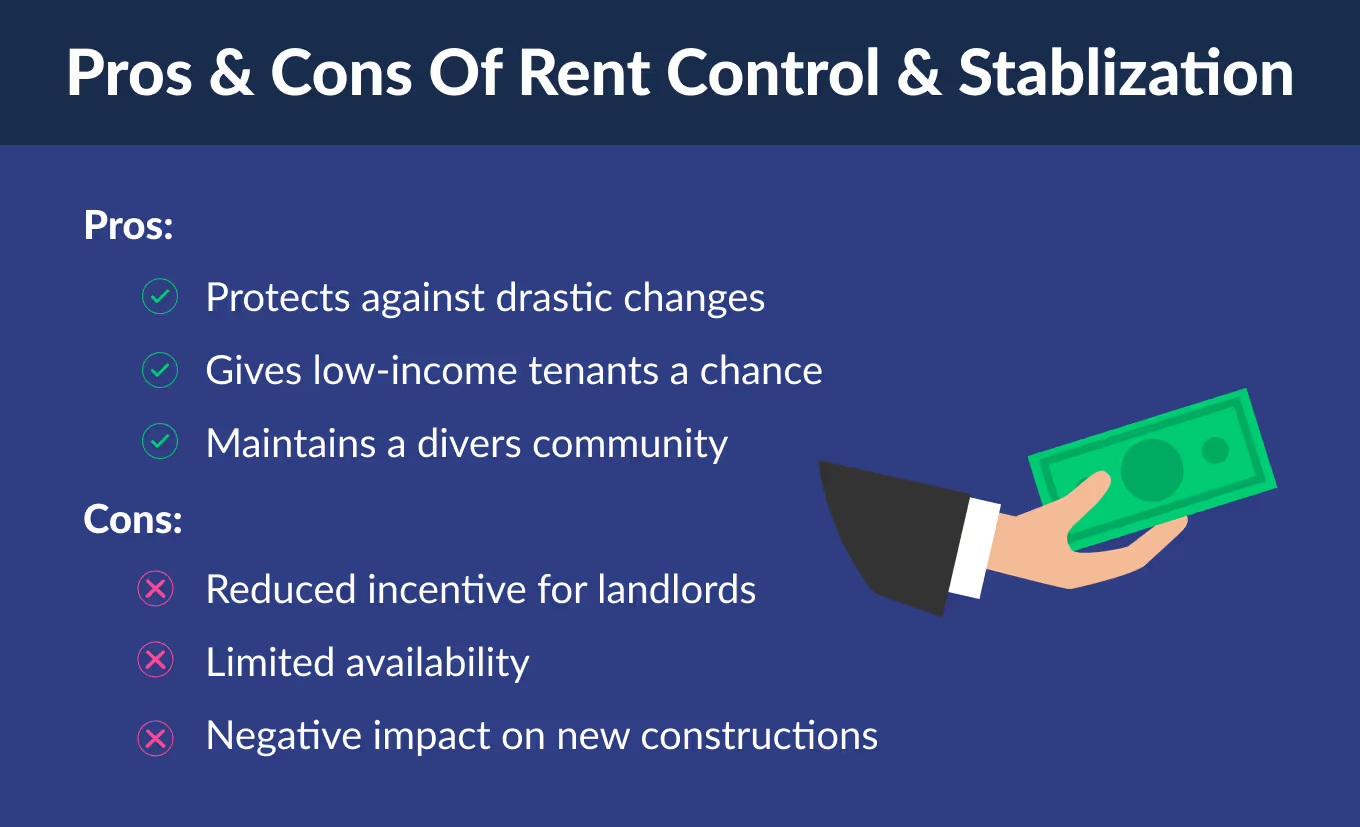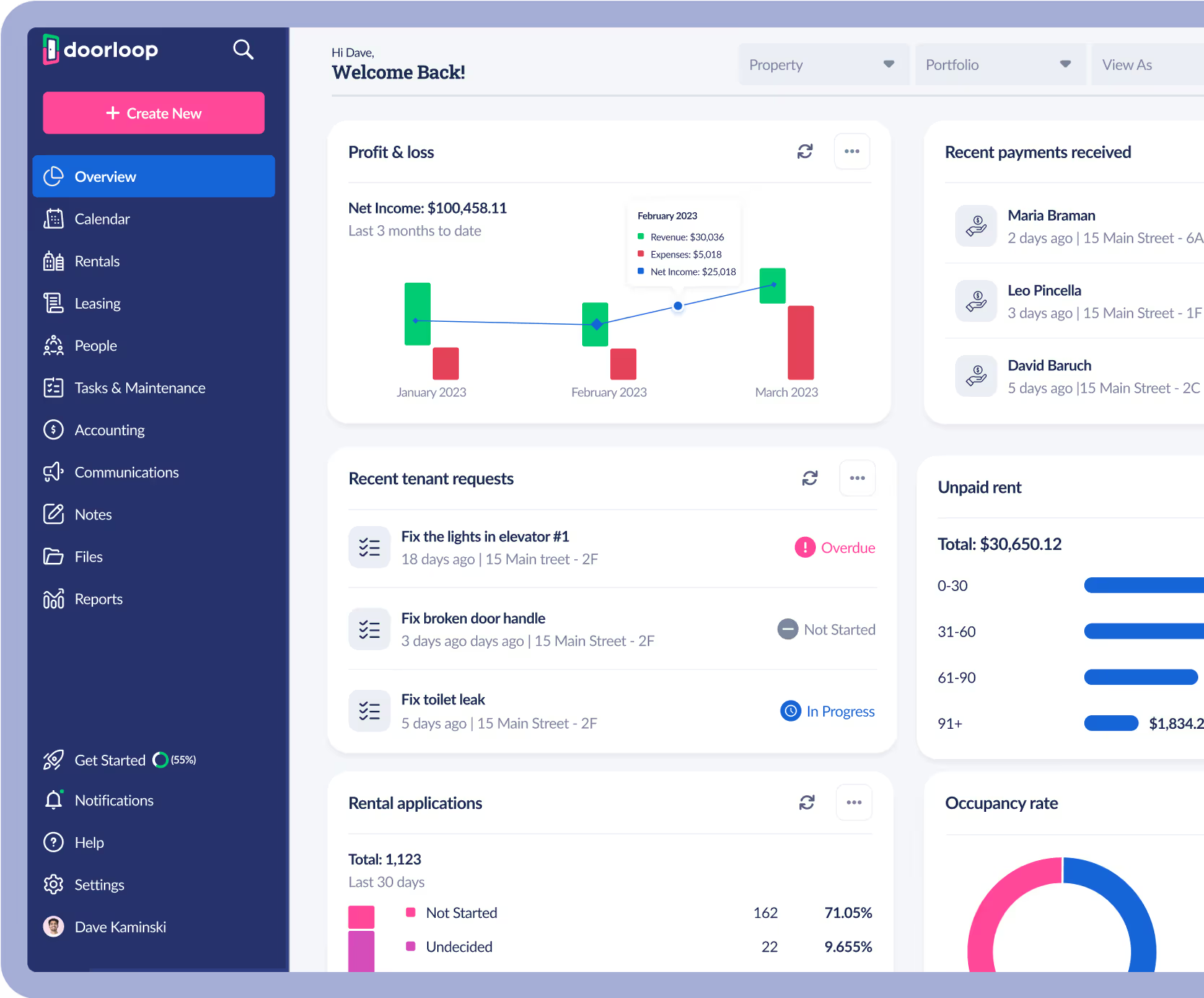If you're a tenant or a landlord, you may have heard of rent control and rent stabilization.
However, you might not be sure what they actually mean or how they differ from one another.
In this post, we'll break down the basics of rent stabilization and rent control, including what they are, how they work, and the pros and cons of each.
Before getting into the comparisons, let's discuss what each term means and what it does.
Rent Control & Rent Stabilization

To begin to understand how rent control and rent stabilization compare to each other, it is important to know exactly what each of them refer to.
So, to begin, we will be explaining what rent control and rent stabilization are, as well as some of the requirements that state and local laws impose on them.
What is rent control?
Rent control is a government-imposed price ceiling on rent for certain units or buildings. It is intended to protect tenants from excessive rent increases and to ensure that they can afford to continue living in their homes. Rent control is often implemented in response to a housing crisis, such as a shortage of affordable housing or rapidly rising rent prices.
Rent control is typically applied to specific units or buildings, rather than to an entire city or region. For example, a city might impose rent control on all units built before 1980, or on units in buildings with more than five units. Landlords are only allowed to charge rent at or below the legally-mandated rent control price, and they are not allowed to evict tenants without just cause.
What is rent stabilization?
Rent stabilization is a form of rent regulation that aims to protect tenants from excessive rent increases while also allowing landlords to earn a fair return on their investment. It is typically implemented in cities or regions with a high demand for rental housing, where rent prices might otherwise be driven up beyond what many tenants can afford.
Rent stabilization is typically applied to a larger number of units than rent control, and it may cover an entire city or region. Under rent stabilization, landlords are allowed to increase the rent by a certain amount each year, as determined by a government agency or rent board. Landlords may also be required to provide certain services, such as maintenance and repairs, in exchange for the right to charge higher rent.
Rent Control & Rent Stabilization Regulations
Rent control and rent stabilization regulations and laws vary widely from one location to another. Some cities or states may have rent control laws that apply to certain types of units or buildings, while others may have rent stabilization laws that apply to a larger number of units.
It is important for tenants and landlords to familiarize themselves with the specific laws and regulations that apply in their area. Landlords should be aware of the limits on the amount of rent they are allowed to charge, as well as any requirements for maintaining their properties or providing services to tenants. Tenants should be aware of their rights under rent control or rent stabilization, including their rights to challenge rent increases and to have their landlord maintain the property.
In some cases, rent control and rent stabilization may be implemented at the same time, with rent control applying to a smaller number of units and rent stabilization applying to a larger number. It is important for tenants and landlords to understand which regulations apply to their specific units or buildings.
So, now that we know about both rent control and rent stabilization, let's discuss some of their pros and cons.
Pros & Cons Of Rent Control & Rent Stabilization

While both rent control and rent stabilization aim to limit the amount of rent that landlords can charge their tenants, they work in different ways and have different pros and cons.
Pros
Here are some of the potential benefits of rent control and rent stabilization:
Protecting tenants from sudden and drastic rent increases
Both rent control and rent stabilization can provide some stability for tenants by limiting the amount that landlords can increase rent each year. This can make it easier for tenants to budget for their housing expenses and can help to prevent them from being forced to move due to unaffordable rent increases.
Ensuring that low-income tenants can afford to live in their homes
Rent control and rent stabilization can help to make housing more affordable for low-income tenants, who may not be able to afford market-rate rent. By limiting the amount that landlords can charge in rent, these regulations can help to ensure that low-income tenants are able to afford to live in their homes.
Maintaining a diverse and stable community
Rent control and rent stabilization can help to prevent gentrification and the displacement of long-term residents. By keeping rent affordable, these regulations can help to maintain a diverse community of people.
Cons
While rent control and rent stabilization can have some benefits for tenants, they can also have some drawbacks, including:
Reduced incentives for landlords to maintain or improve their properties
Some landlords may be less motivated to maintain or improve their properties if they are not able to increase rent to cover the costs of these improvements. This can lead to deterioration of rental properties over time.
Limited availability of rental housing
Rent control and rent stabilization can reduce the supply of rental housing by making it less profitable for landlords to rent out their properties. This can lead to a shortage of rental housing, which can drive up rent prices and make it harder for people to find affordable housing.
Negative impact on new construction
Rent control and rent stabilization can also discourage new construction of rental housing, as developers may be less likely to build new properties if they are not able to charge market-rate rent. This can further limit the supply of rental housing and drive up rent prices.
FAQs
Here are some frequently asked questions about rent stabilization and rent control:
Can landlords evict tenants under rent control or rent stabilization?
Under rent control, landlords may not be able to evict tenants without just cause, such as nonpayment of rent or damage to the property. Under rent stabilization, landlords may be able to evict tenants if they need to make major renovations or if the tenant breaches the terms of the lease.
Do rent control and rent stabilization apply to all rental properties?
No, rent control and rent stabilization typically only apply to certain types of units or buildings. For example, rent control may only apply to units built before a certain date, while rent stabilization may only apply to buildings with a certain number of units.
Are rent control and rent stabilization the same thing?
No, rent control and rent stabilization are two different forms of rent regulation. Rent control is a price ceiling on rent, while rent stabilization is a system that allows landlords to increase rent by a certain amount each year.
Do rent control and rent stabilization apply in all cities or states?
No, rent control and rent stabilization are implemented at the local level, so they may only apply in certain cities or states. Some cities or states may have both rent control and rent stabilization laws, while others may have only one or the other.
































.svg)
.svg)

